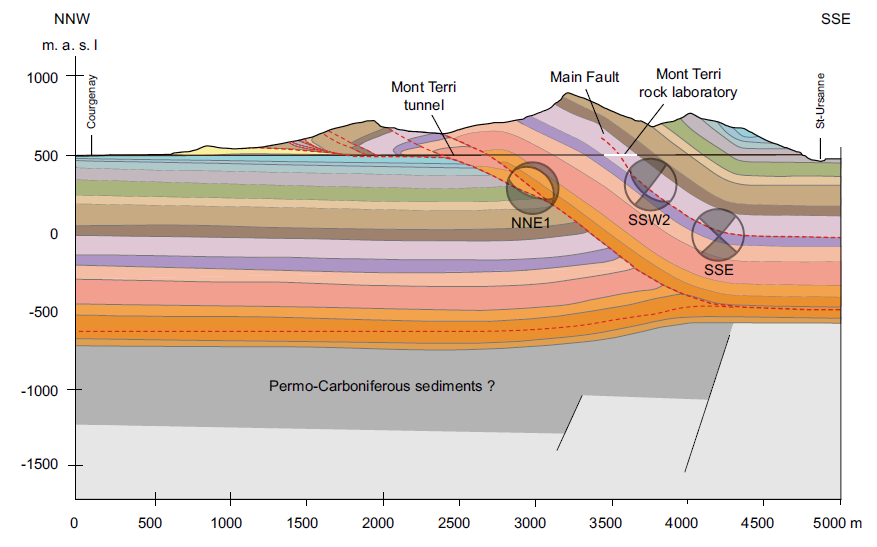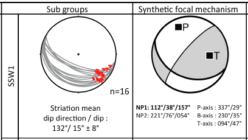Using microseismicity and synthetic focal mechanisms based on structural data helps constrain the nature and spatial distribution of very weak seismicity: Seismotectonic analysis around the Mont Terri rock laboratory (Switzerland): a pilot study. Martinus Abednego, Patrick Blascheck, Senecio Schefer, Christophe Nussbaum, Manfred Joswig, Paul Bossart, Jon Mosar; Swiss Journal of Geosciences 2017 doi 10.1007/s00015-017-0263-6
Read More
Abstract In this pilot study in collaboration with swisstopo, we used recorded seismic events from the SED permanent network and data from a dedicated SNS network to improve the seismotectonic understanding of very weak seismicity in the vicinity of the Mont Terri underground laboratory. We combined field data on faults with microseismic events and modelling of stress and focal mechanisms. Eighty-six events with very low magnitudes (ML & –2.0 to 2.0) recorded between July 2014 and August 2015 were located within a radius of 10 km of the underground laboratory and used for modelling. We also compiled 234 fault/striation data from laboratory tunnels and regional geology, and also from seismic/borehole data on basement faults. This database allowed us to define seven groups of main faults in the cover and four groups in the basement. For each of these groups we computed a synthetic focal mechanism that was subsequently used to determine a synthetic P-phase waveform. The synthetic waveforms were then correlated with the microseismic events of the cover and the basement respectively. Of these, 78 events yielded satisfactorily correlation coefficients that we used for a regional seismotectonic interpretation. The results for this pilot study confirm that our affirmative method can be used to augment local and regional seismotectonic interpretations with very weak-intensity earthquake data.

Mont Terri Cross-section with focal mechanisms as resolved in our paper
